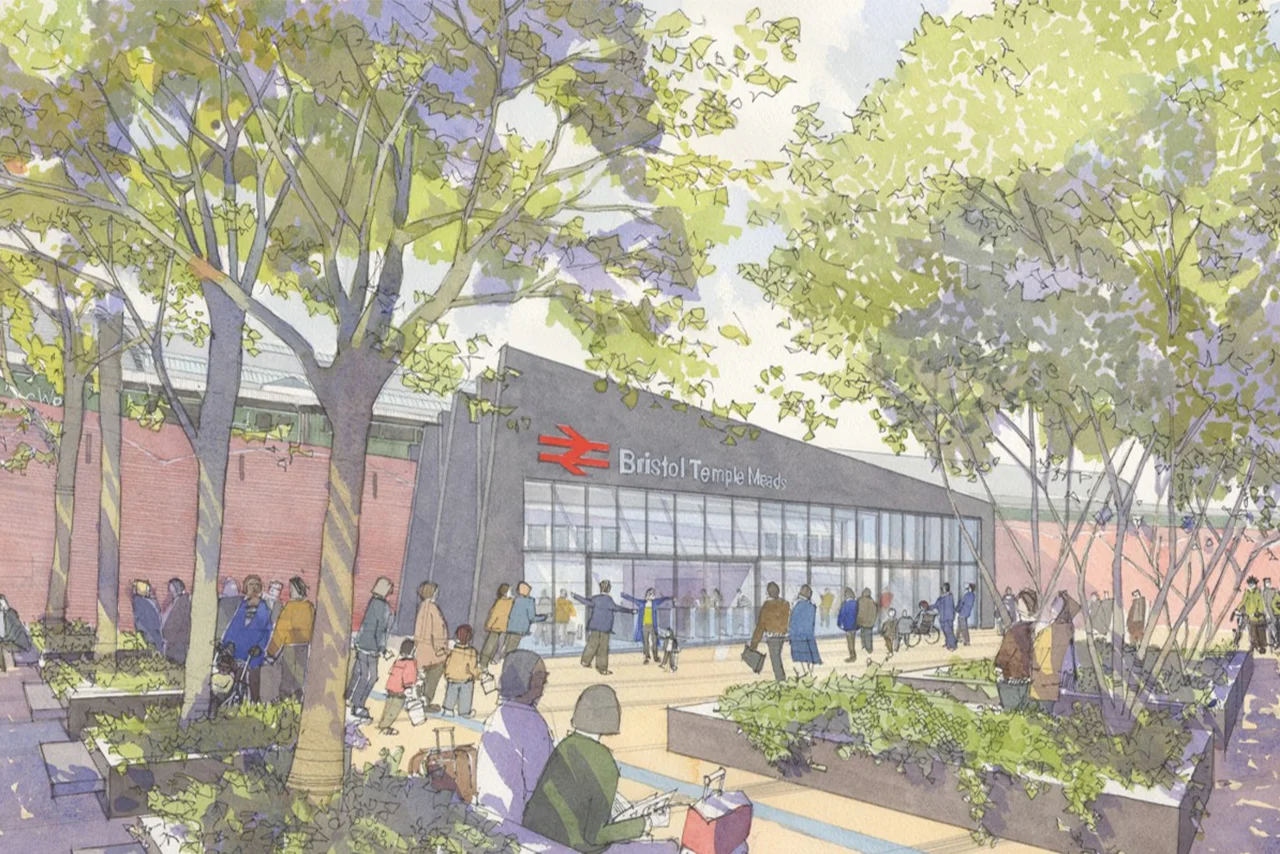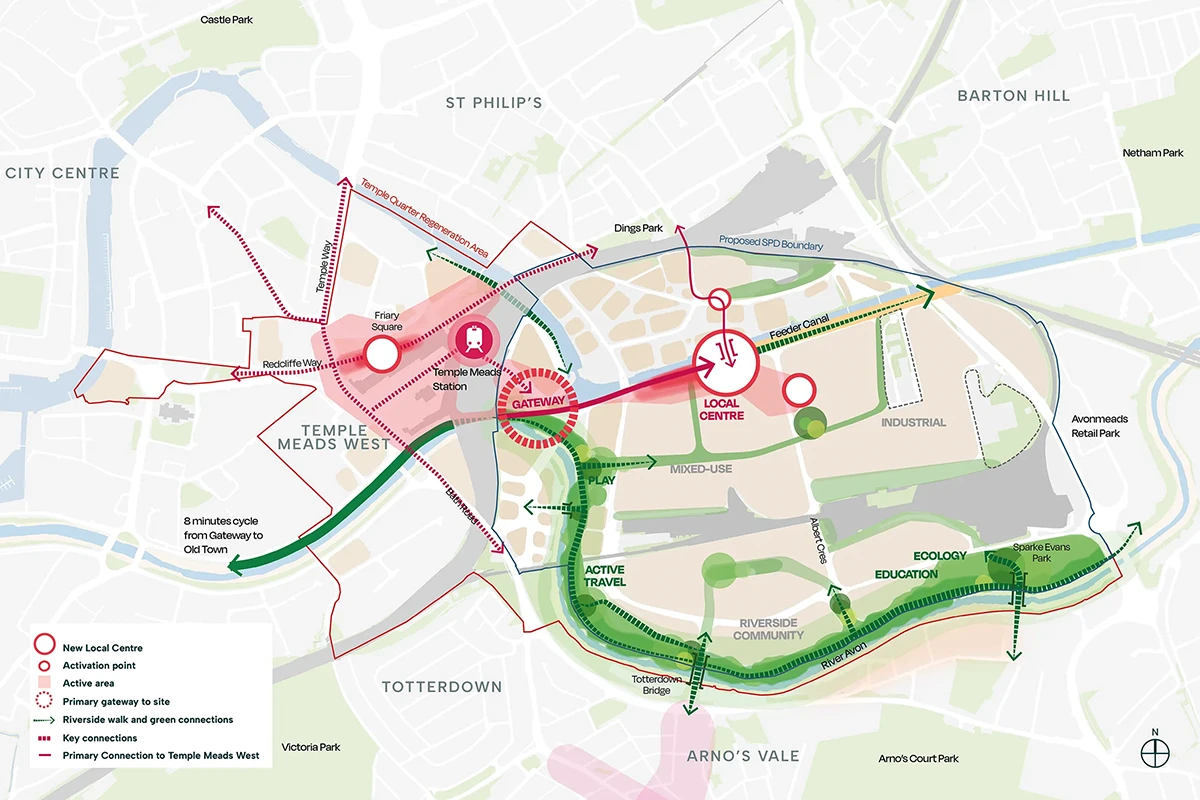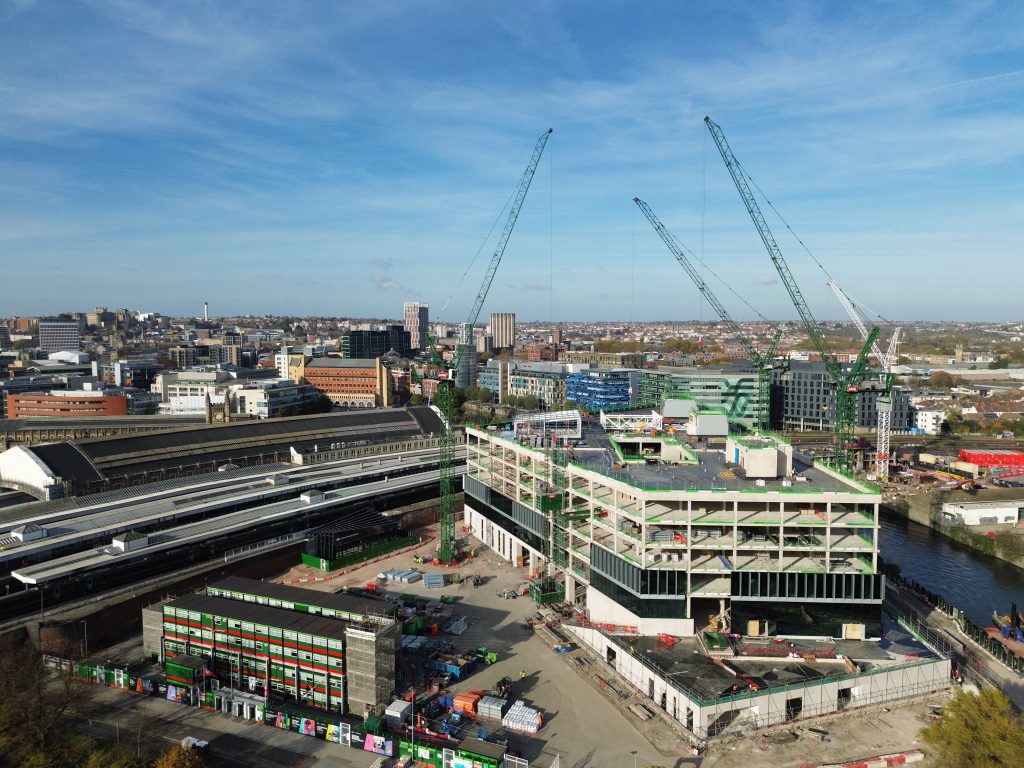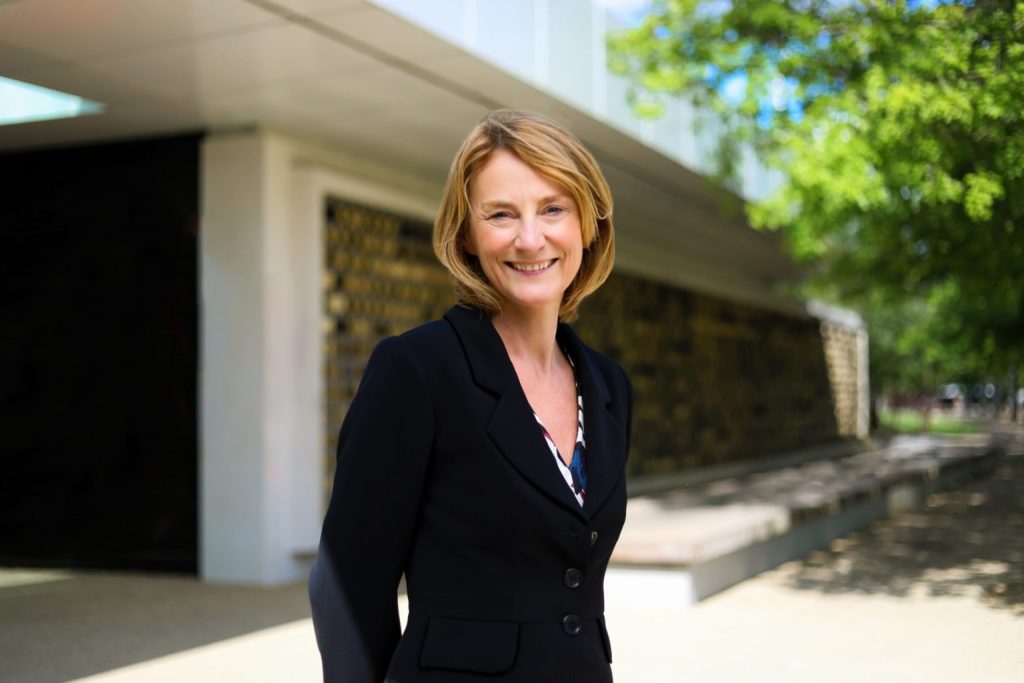A consultation on proposals for the transformation of Bristol Temple Quarter has begun.
The Temple Quarter regeneration programme, a partnership project between Bristol City Council, the West of England Combined Authority, Homes England and Network Rail, aims to transform 130 hectares of land around Bristol Temple Meads railway station to deliver 10,000 new homes and thousands of new jobs, alongside new public spaces, low-carbon infrastructure and commercial uses.
A draft Development Framework for the area has now been prepared and published. Following the long-anticipated government funding award of £94.7m in June 2022, the publication of the draft Development Framework is the next major milestone for the UK’s largest regeneration programme.
The framework sets out the scale and ambition the partners have for change across the area stretching from Temple Gate to St Philip’s Causeway. Reflecting the project’s potential to transform a large area of the city and the anticipated benefits it will bring to the city and region; the Temple Quarter partners are eager to gather as much public feedback as possible.
The Development Framework is broken down into six key “character areas”, setting out the opportunities each area presents to transform the area into a world-class gateway to the city region.
The areas around Temple Meads station include proposals for new and improved transport infrastructure, including three new entrances to the station itself, as well as opportunities for high-quality city centre living and working, and the public spaces to make it a place people want to spend time. Further afield, the framework includes high level principles for future change at St Philip’s Marsh that could bring the new homes and jobs that Bristol needs, as well as the potential to deliver a major new leisure and sporting facility on the site of the fruit market.
To ensure as many people as possible can respond to the proposals, an online consultation hub and survey will be supported by in-person events at community hubs around the area, pop-ups in and around Temple Meads station, and three creative commissions focused on supporting and enabling under-represented groups to have their say. Translations, Easy Read and paper copies are also available. To find out more about the programme of events, request alternative formats or complete the online survey, visit the online consultation hub.
Marvin Rees, Mayor of Bristol, said:
“Publishing this document is another step on the journey for Temple Quarter after years of work to get to this stage. Combined with the government funding we secured in 2022, we now have a clear and ambitious vision for delivering the affordable homes, new jobs and sustainable infrastructure the city needs to build a good pattern of life for residents here. The consultation is a chance for Bristolians to get their fingerprints on the framework and test the emerging principles for the regeneration of St Philip’s Marsh. Underpinned by the UN’s Sustainable Development Goals, Temple Quarter can be a driver of the city region’s economy and support our ambitions to be inclusive, successful and carbon neutral.”
Metro Mayor, Dan Norris, said:
“We want to hear from as many people as possible about their views on opportunities and challenges for the area, so we can make Temple Quarter the best it can be, while striving to reach our ambitious net zero targets. It’s now possible to move to this stage after the West of England Combined Authority I lead unlocked substantial government funding in April. This is another step along the way to get on with what people really want. That is to stop talking about visions and aspirations for the area, but to see real spades in the ground. We are creating a new gateway to the city and wider region that would make Brunel proud.”
Marianne Brook, Homes England Project Director for Temple Quarter, said:
“This marks another important step forward in the regeneration of Bristol Temple Quarter. The Programme will transform brownfield land into desirable, sustainable neighbourhoods, providing thousands of much-needed new homes and jobs, and creating communities people can be proud to be part of. The Development Framework is a crucial document to set out how this ambitious project will be delivered, and the consultation offers an important opportunity for the local community to input.”
Francis McGarry, Network Rail’s Wales & Western Investment Director, said:
“We’re delighted to reach this next important milestone for the Bristol Temple Quarter programme, which will bring further transformation for our Bristol Temple Meads station. Building on the current improvements to the station including the refurbishment of the historic train shed roof, as well as the clever new track layout completed in summer 2021, the regeneration of Bristol Temple Quarter will further enhance the station into a world class transport hub and the beating heart of this exciting wider development, benefitting passengers, the city of Bristol and wider West of England region.”
The character areas are:
- Bristol Temple Meads Station: Brunel’s masterpiece will become a modern, safer, more efficient station fit for the 21st It will be fully accessible and inclusive for all passengers and will be futureproofed to accommodate anticipated growth. Major changes include new entrances, new retail spaces, improved passenger facilities, and easier access to the station using public transport, walking and cycling.
- City Gateway: Three new entrances to Temple Meads will be created as part of the City Gateway area to give Bristol the entrance to the city it deserves. An eastern entrance will open into the University of Bristol’s Enterprise Campus. The Northern Entrance will be improved, becoming an attractive public space, with a terrace outside the Midland Shed. The Midland Shed will have car parking removed to enable new customer and retail facilities to be created. At the Friary, a transport interchange is proposed with space for buses, including new bus stops and shelters. The forecourt outside the station at Station Approach will be pedestrianised, with Hackney Carriage and disabled parking access retained, but all other motor traffic removed to create a welcoming and safe space. To the south, the Southern Gateway will be a transport hub, including a new multi-storey car park and a proposed new level-access directly into the station, using an underused track bed over Cattlemarket Road. By removing parking elsewhere at the station and relocating it to the Southern Gateway, land will be freed up for development and new public spaces currently used for parking.
- Friary North: Complementing the improved station, Friary North will be a destination to work, live and enjoy leisure time. At the heart of the area, a new pedestrianised public civic square is proposed, with green landscaping, seating and meeting places, and space for public art and pop-up events, as well as retail and food and drink outlets. Making the most of the location next to the south west’s busiest station, a multi-storey office space and new residential buildings are proposed, helping to transform this area into a thriving mixed-use destination.
- Temple Gate: The area’s ideal location close to Temple Meads and the city centre presents an opportunity to create a sustainable new neighbourhood with much-needed affordable homes and the infrastructure to support them. On the frontage to Temple Gate, a mix of uses could support high density city centre apartment living, alongside retail and office space. A new hotel within easy reach of the station could also face onto Temple Gate.
- Mead Street: A separate Development Brief for Mead Street was consulted on and endorsed by the council’s cabinet in summer 2022. Proposals here could see up to 1500 new homes, 500 jobs, sustainable travel routes and a new 0.5-hectare public green space created.
- St Philip’s Marsh: The proposals for St Philip’s Marsh are significantly less detailed than other areas, reflecting the early nature of the work done so far, with change expected over a 20 year period. The Development Framework sets out early scenarios for how the area might change, as well as the challenges facing any transformation process, including how to deliver the thousands of new homes Bristol needs while providing the space new and existing businesses need to thrive. By far the largest area in Temple Quarter, St Philip’s Marsh will be subject to its own programme of master planning, starting in mid-2023. This process aims to assess the capacity of the site for new homes, jobs and public spaces, and will be supported by in-depth public and business engagement throughout to help deliver a plan that can support new and existing residents and businesses.



